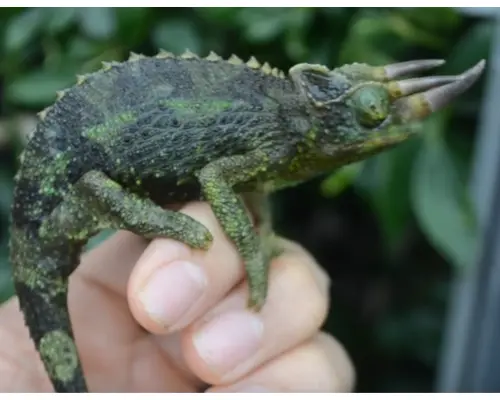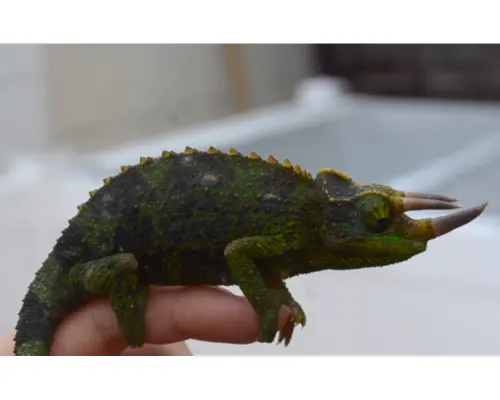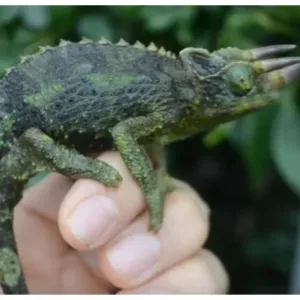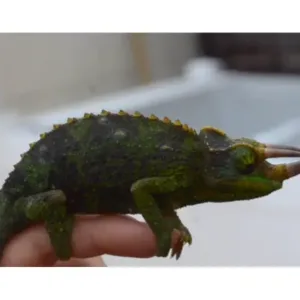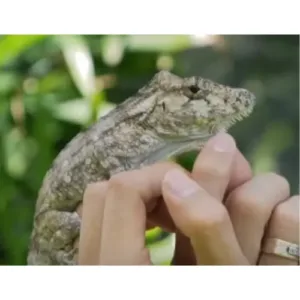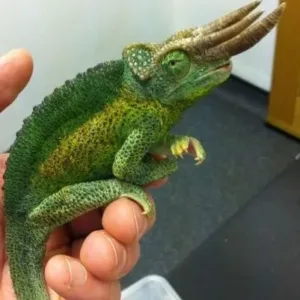Jackson’s chameleons were not discovered by a scientist named Jackson, but by an ornithologist named Frederick Jackson, who was the prior governor of the country. The chameleons were native to East Africa and have been introduced into California, Hawaii, and even Florida.
At about four or five months of age, Jackson’s chameleons are brighter green with a brownish hue. Males are often brightly colored with blue or yellow markings. The males of the species have small brown horns above their eyes and one on the nose, which is why they’re sometimes called three-horned chameleons. Jackson’s chameleons’ range in size from 9 to 13 inches in length and include the tail. People tend to be larger in males than females.
If you want to make sure your pet has been treated well, you should look for a reliable breeder. There should be no cloudiness in the eyes of these creatures. Infections can be caused by swollen limbs or digits, so be on the lookout for this condition. These are signs of respiratory infections when your Jackson’s chameleon is drooling or wheezing.
The skin of Jackson’s chameleons should be free of cuts and bruise. After you get a Jackson’s chameleon, the first thing you should do is to have it checked out by a reptile doctor.
Jackson chameleon feeding
A variety of insects are fed to the chameleons. Crickets are usually the mainstay of the diet but mealworms, super worms, waxworms, roaches, silkworms, flies, fruit flies, and grasshoppers can also be fed. If you are certain that the wild-caught insects have not been exposed to pesticides, you should avoid feeding them. Before feeding insects to a reptile, be sure to make sure they are gut loaded.
The humidity level for Jackson’s chameleons needs to be between 50 and 80 percent. In order to accomplish this, the plants in the enclosure need to be misted at least twice daily and once a day. Chameleons drink from a water bowl, but they lap up droplets of water off plants, and the mist and a drip system also serve as sources of water.

